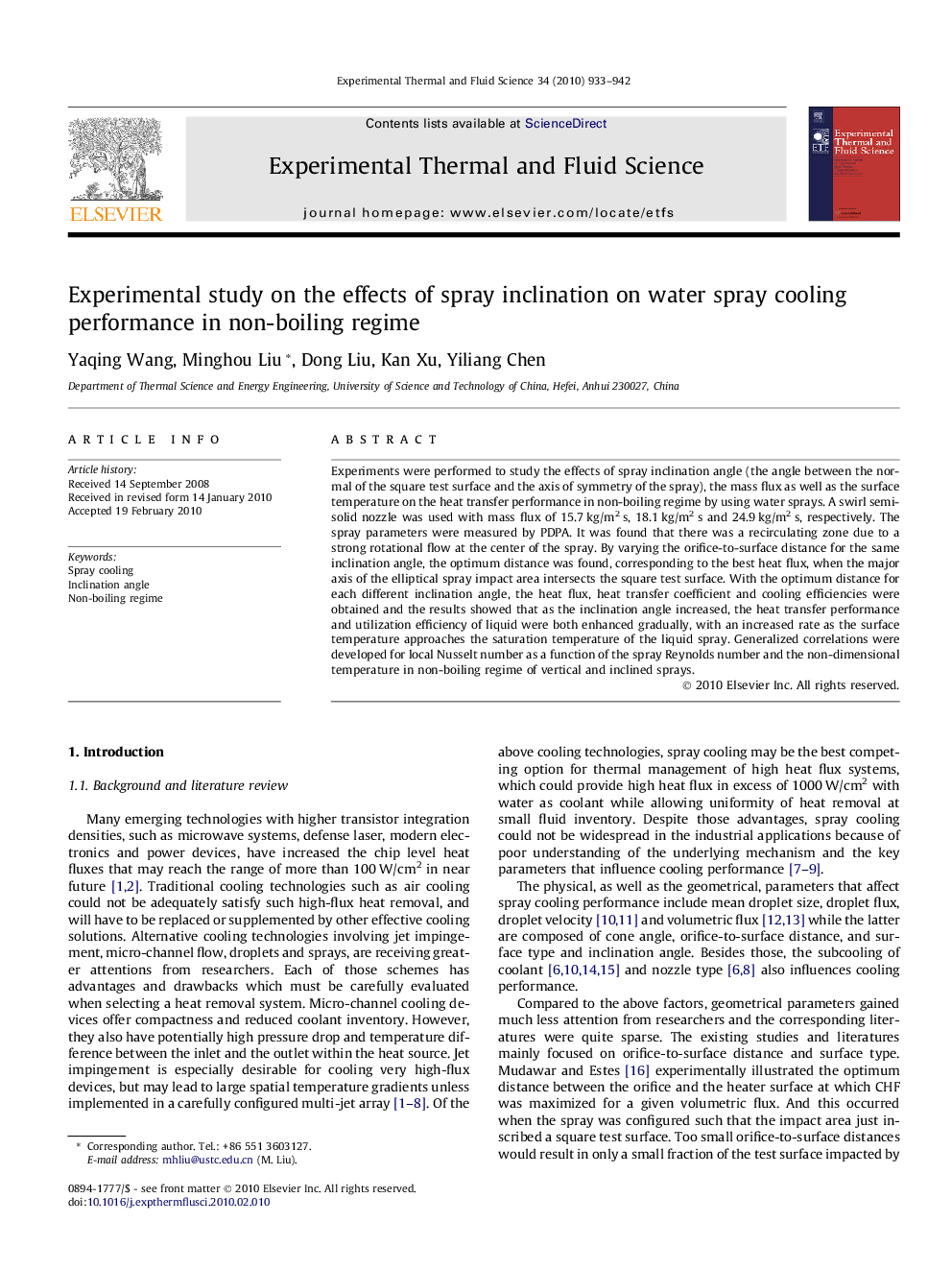| Article ID | Journal | Published Year | Pages | File Type |
|---|---|---|---|---|
| 652153 | Experimental Thermal and Fluid Science | 2010 | 10 Pages |
Experiments were performed to study the effects of spray inclination angle (the angle between the normal of the square test surface and the axis of symmetry of the spray), the mass flux as well as the surface temperature on the heat transfer performance in non-boiling regime by using water sprays. A swirl semi-solid nozzle was used with mass flux of 15.7 kg/m2 s, 18.1 kg/m2 s and 24.9 kg/m2 s, respectively. The spray parameters were measured by PDPA. It was found that there was a recirculating zone due to a strong rotational flow at the center of the spray. By varying the orifice-to-surface distance for the same inclination angle, the optimum distance was found, corresponding to the best heat flux, when the major axis of the elliptical spray impact area intersects the square test surface. With the optimum distance for each different inclination angle, the heat flux, heat transfer coefficient and cooling efficiencies were obtained and the results showed that as the inclination angle increased, the heat transfer performance and utilization efficiency of liquid were both enhanced gradually, with an increased rate as the surface temperature approaches the saturation temperature of the liquid spray. Generalized correlations were developed for local Nusselt number as a function of the spray Reynolds number and the non-dimensional temperature in non-boiling regime of vertical and inclined sprays.
